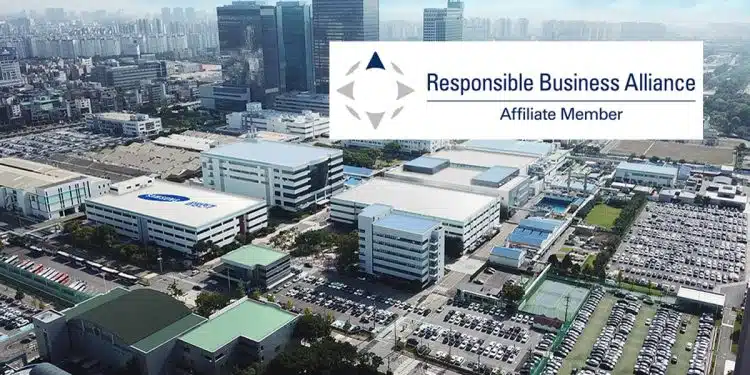Samsung Electro-Mechanics announced that it has joined the Responsible Business Alliance (RBA) and Drive+ (automotive electronic component supplier council) to promote ESG management according to global standards.
RBA is a non-profit organization formed for responsible management activities of companies affected by the global supply chain, with more than 220 global companies participating as members.
Since 2017, Samsung Electro-Mechanics has established self-assessment standards such as the “Code of Conduct for Business Partners” based on the “RBA Code of Conduct” to check compliance management, including safety, environment, and human rights.
By joining the RBA, Samsung Electro-Mechanics will strengthen its application of the RBA’s proposed global Code of Conduct in five areas: labor, health and safety, environment, business ethics, and management systems.
Samsung Electro-Mechanics plans to review and improve the entire supply chain to ensure that its domestic and overseas business sites, and business partners operate in accordance with RBA standards. Accordingly, Samsung Electro-Mechanics will actively participate in the RBA VAP Audit (conducted by a third-party organization) for domestic and overseas business sites to maintain a global level of working environment for workers at Samsung Electro-Mechanics and its business partners.
Samsung Electro-Mechanics is also strengthening ESG management in its automotive electronic component business by joining Drive+, a council of automotive electronic component suppliers formed to fulfill social responsibility within the supply chain of the automobile industry.
Based on global international norms of the automotive industry, Drive+ pursues sustainability based on five strategies:
- supply chain
- raw materials
- working environment
- carbon neutrality
- circular value chain
through three codes of conduct:
- business ethics
- environment
- human rights and working conditions
More than 30 global automotive electronic component companies, including Continental, HARMAN and BASF are active in Drive+.
Samsung Electro-Mechanics CEO Chang Duckhyun said, “As a leading company in the global automotive electronic components industry, Samsung Electro-Mechanics will strengthen our supply chain management to global standards and grow into a global company trusted by our customers and stakeholders.”
Samsung Electro-Mechanics’ sustainability management activities have been recognized by various rating agencies. It has been recognized as a leading ESG company by being the first company in Korea to be included in the DJSI World Index for 14 consecutive years, the first in the industry to be certified by the Carbon Trust for “Carbon Footprint”, and certified for “Zero Waste to Landfill” at all business sites in Korea.
Meanwhile, Samsung Electro-Mechanics has been conducting “ZERO WAVE”, an ESG campaign involving employees, since June to commemorate its 50th anniversary. The program aims to achieve “zero” in five areas of ESG practices:
- Zero waste (reducing waste)
- Net Zero (reducing carbon)
- Zero bias (reducing discrimination)
- Zero Water scarcity (saving water)
- Zero social distance (reducing social distance).
































